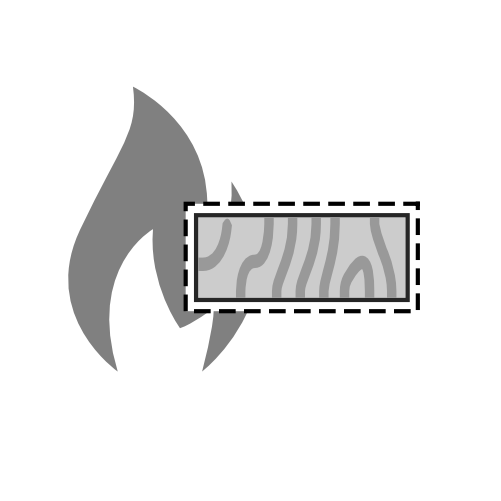
Fire retardant treated wood (FRTW) is a type of wood or wood-based product treated with fire-retardant chemicals to reduce surface-burning characteristics—such as flame spread, fuel contribution rate, and smoke density. This wood is typically pressure-impregnated with these chemicals to enhance overall fire performance and safety.
Fire-retardant treatments reduce the amount of heat released during the early stages of a fire and limit the release of flammable volatiles. This treatment slows down the rate of flame spread across the surface, and once the flame source is removed, FRTW stops charring.
The fire-retardant treatment of FRTW alters how the wood behaves during exposure to heat. By minimizing the production of combustible gases, fire retardant treated wood reduces flame propagation and smoke generation, improving life safety performance in a building.
These properties make FRTW suitable for projects where enhanced fire resistance is required without completely substituting noncombustible materials.
The International Building Code (IBC) defines fire retardant treated wood as wood having a flame spread index of 25 or less and showing no significant combustion after a 20-minute fire test.
IBC compliance also requires that all FRTW products be clearly labeled, confirming that the material has been tested and meets fire safety performance standards.
When using fire-treated wood, engineers and contractors must account for changes in the wood’s strength and mechanical properties resulting from the treatment process.
FRTW may be required for certain construction types or assemblies, depending on occupancy, fire rating, or code classification. Collaboration with a fire safety engineer is strongly recommended to ensure both compliance and safety performance.
Proper specification of fire retardant treated wood ensures compliance with building codes and enhances occupant safety. Always consult manufacturer data, IBC standards, and fire safety consultants when detailing assemblies or verifying acceptable use cases.
By understanding how FRTW performs under fire exposure, design teams can balance safety, structural integrity, and code requirements effectively.
Ready to streamline fire retardant treated wood detailing into your design?
Discover how D.TO enhances your daily design workflows on D.TO’s key features page, or schedule a demo to explore them in more detail!!
